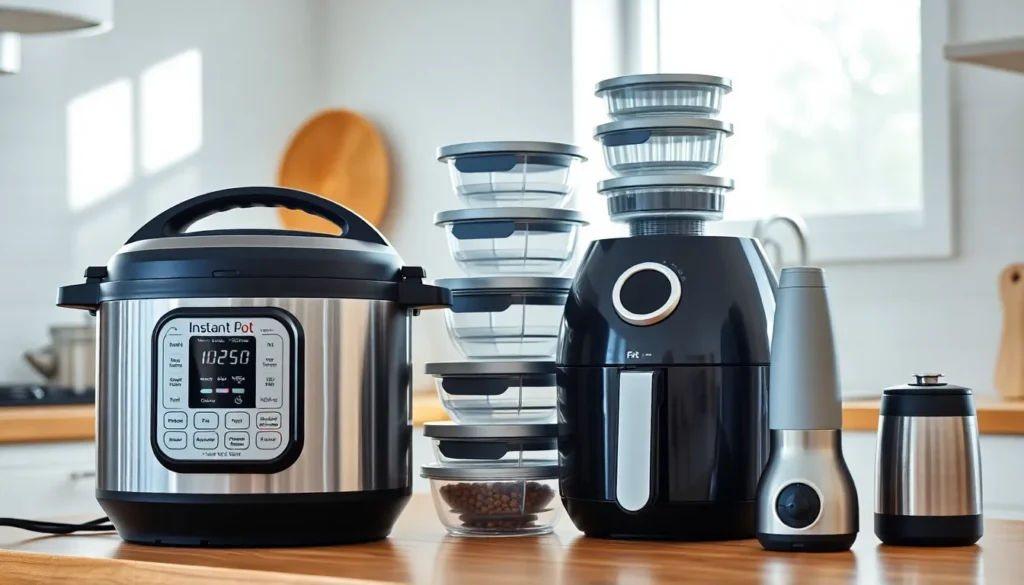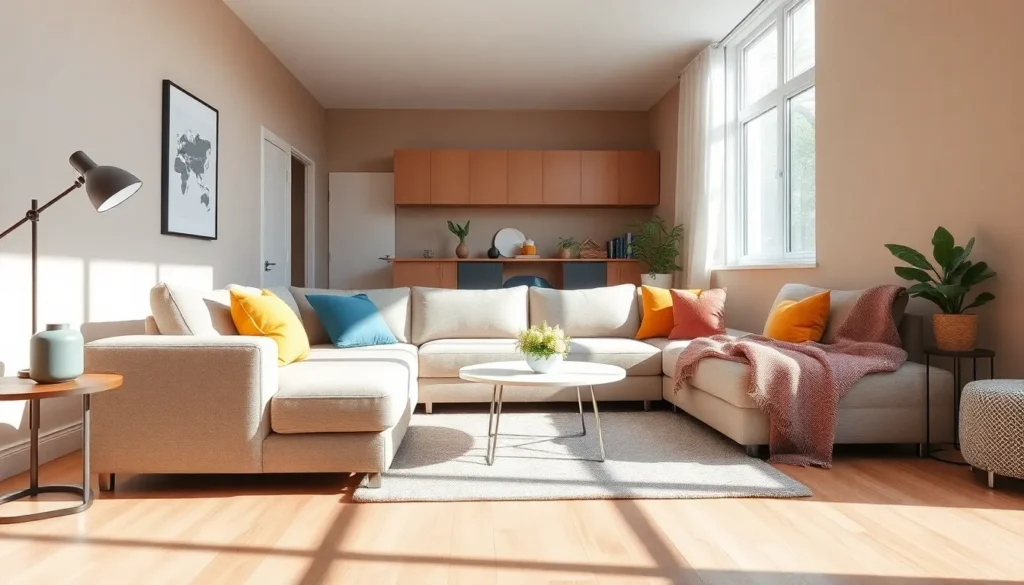In a world where living large often means living small, maximizing tiny spaces has become an art form. Whether it’s a cozy studio apartment or a compact office, the challenge of making every square inch count can feel like solving a Rubik’s cube blindfolded. But fear not! With a sprinkle of creativity and a dash of clever design, even the smallest of spaces can transform into functional havens.
Table of Contents
ToggleImportance Of Maximizing Small Spaces
Maximizing small spaces enhances functionality. Limited square footage often limits usability, yet creative design strategies can transform cramped areas into efficient environments. Utilizing vertical space is essential; shelves and wall-mounted units make effective use of height for storage.
Small spaces encourage intentional living. When individuals prioritize essentials, they reduce clutter and promote a minimalist ethos. Such an approach fosters a sense of peace and clarity in daily routines.
Efficient layouts are vital in compact spaces. Open floor plans allow for fluid movement and adaptability. Furniture selection also plays a key role; multi-functional pieces like sofa beds and folding tables optimize space and cater to varied needs.
Small spaces boost creativity. Innovative solutions, like modular furniture, invite personalization and self-expression. Custom storage solutions provide unique ways to incorporate style while maintaining organization.
Environmental sustainability benefits from maximizing small spaces. Smaller homes consume less energy, reducing the overall carbon footprint. Compact living encourages mindful consumption and reliance on fewer resources.
Maximizing small spaces promotes connectivity. Intimate environments foster stronger relationships among occupants, encouraging interaction and communication. Socialization thrives in thoughtfully designed spaces that cater to gathering, even when square footage is limited.
Recognizing the importance of maximizing small spaces opens doors to countless opportunities. Enhanced usability, creativity, and sustainability all contribute to improved quality of life in urban settings.
Creative Storage Solutions

Maximizing small spaces requires innovative storage solutions. Various strategies can help transform cluttered areas into organized havens.
Multi-Functional Furniture
Multi-functional furniture optimizes space without sacrificing comfort. Sofas that convert into beds cater to guests while conserving room. Ottomans with hidden storage can hold blankets or games, increasing utility. Tables with foldable designs serve both as dining and workspace, adapting to needs. Each piece should combine style and function, enabling efficient use of square footage.
Vertical Storage Ideas
Vertical storage ideas utilize wall space to maximize area. Shelves can accommodate books or decorative items, elevating organization. Hooks on walls free up floor space, ideal for coats or bags. Fold-down workstations offer functionality without occupying permanent square footage. Tall cabinets or lean-to shelving units add significant storage while drawing the eye upward, creating an illusion of height.
Design Tips For Small Areas
Designing small areas effectively requires strategic choices. Utilizing specific techniques can significantly enhance both functionality and aesthetics.
Color Schemes That Open Up Spaces
Light color schemes create an airy feel in confined spaces. Consider white, pale blues, or soft grays when selecting paints and finishes. These hues reflect natural light and create an illusion of depth. Adding accent colors through accessories can bring personality without overwhelming the room. Additionally, using monochromatic palettes minimizes visual clutter while maintaining interest.
Utilizing Natural Light
Natural light serves as a critical element for small spaces. Large windows maximize sunlight exposure and visually expand the area. Always avoid heavy drapes; opt for sheer or light-filtering treatments that allow light to flow freely. Mirrors can amplify the effect of natural light by reflecting it across the room. Positioning mirrors strategically enhances brightness and creates a sense of spaciousness. Emphasizing openness not only brightens the space but also fosters a more inviting atmosphere.
Decluttering Techniques
Maximizing small spaces requires effective decluttering techniques. These strategies transform cramped areas into organized, functional environments.
Reducing Unnecessary Items
Assessing belongings forms the foundation of decluttering. Begin by sorting items into categories: keep, donate, and discard. Discard items that haven’t served a purpose in the last year. Donate clothes, books, and household items in good condition to local charities. Utilize the one-in, one-out rule to maintain balance as new items come in. Prioritize essentials, keeping only what brings value or joy. This method not only frees up physical space but also creates a more calming atmosphere.
Organizing Essentials Efficiently
Organizing essentials involves creating designated spaces for frequently used items. Use clear bins to categorize smaller items, making them easy to access. Vertical storage solutions, such as shelves and wall-mounted organizers, maximize available height. Utilize drawer dividers to separate and contain similar items within drawers. Group items by function, making them easier to locate when needed. Investing in multi-functional furniture provides additional storage while maintaining a tidy look. A well-organized space enhances functionality and supports a more peaceful living environment.
Maximizing small spaces is more than just a trend; it’s a lifestyle choice that enhances functionality and promotes creativity. By embracing innovative design solutions and efficient layouts, individuals can transform limited areas into inviting environments that reflect their personal style.
Incorporating multi-functional furniture and clever storage options allows for a clutter-free atmosphere that fosters intentional living. With the right design tips and decluttering strategies, small spaces can become not only practical but also aesthetically pleasing.
Ultimately, the journey to maximizing small spaces leads to a more organized and fulfilling life, encouraging stronger connections among occupants and a deeper appreciation for one’s surroundings.




